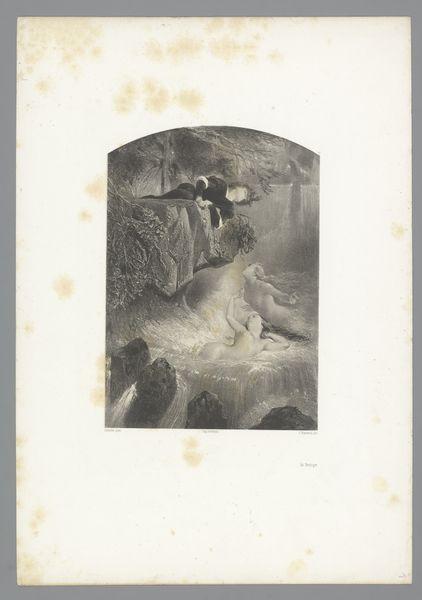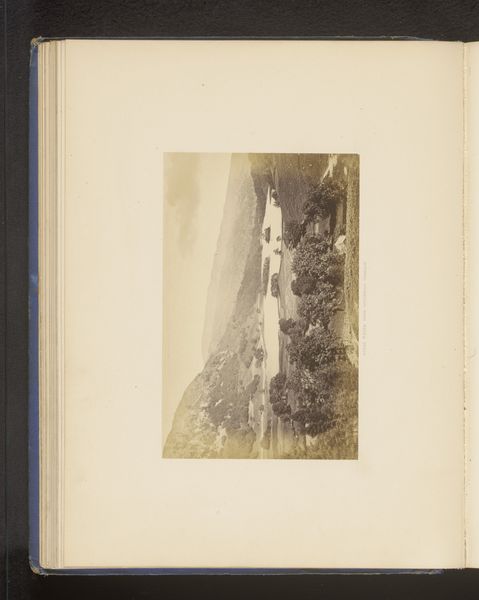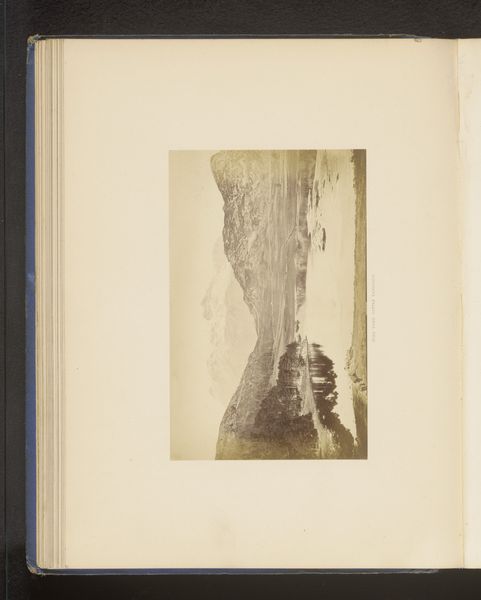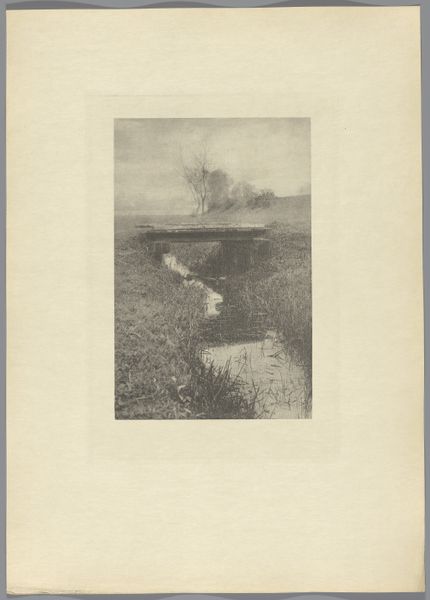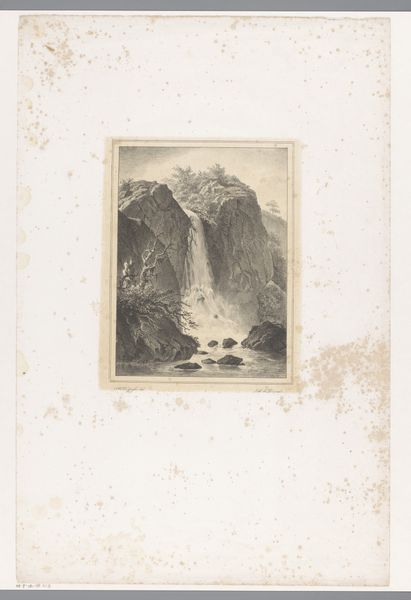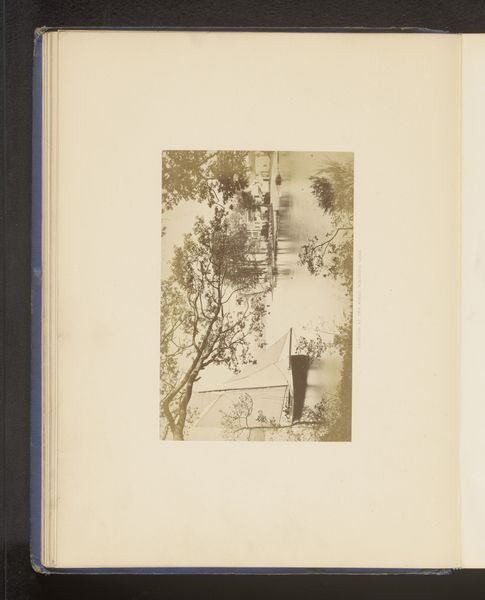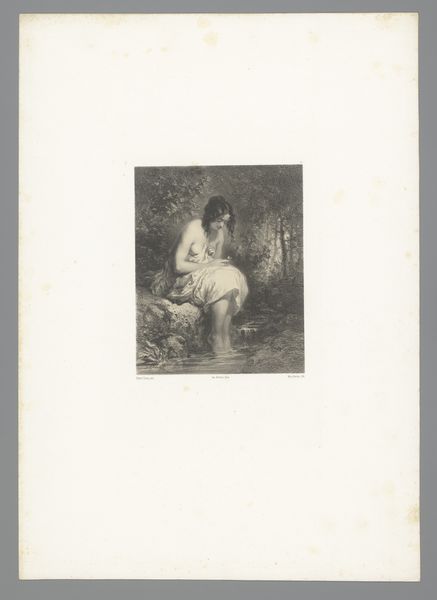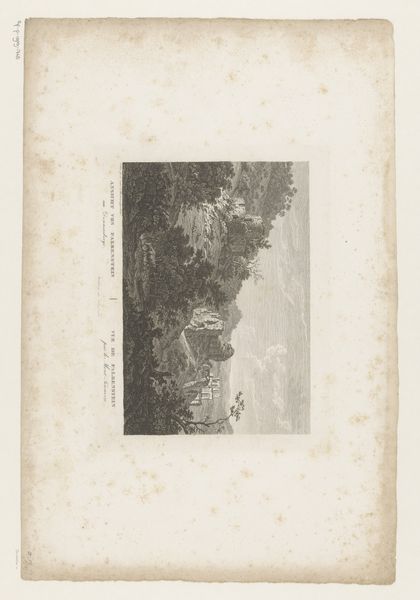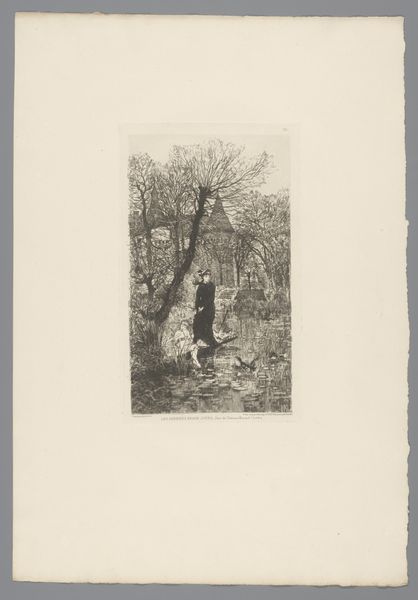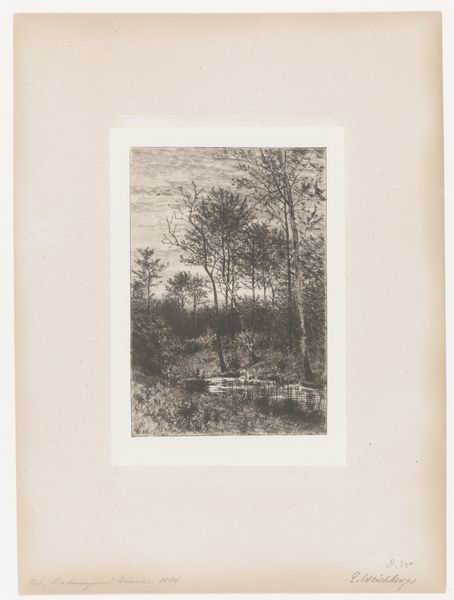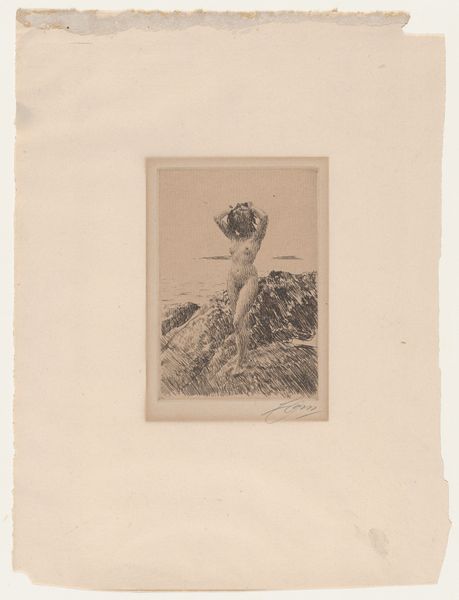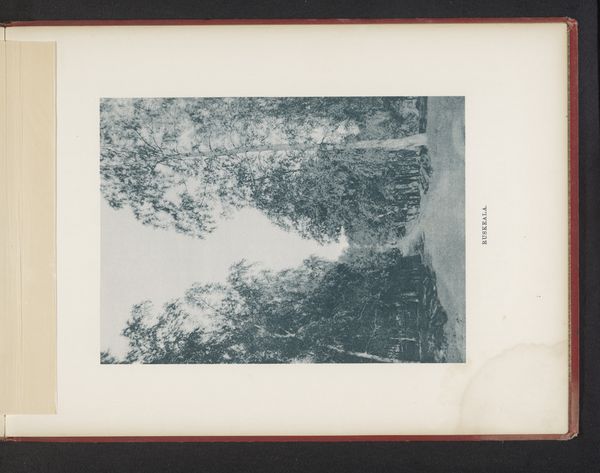
photography, gelatin-silver-print
#
pictorialism
#
landscape
#
photography
#
gelatin-silver-print
#
nude
Dimensions: height 222 mm, width 133 mm
Copyright: Rijks Museum: Open Domain
Curator: Take a moment with this work: “Photographic Reproduction of a Female Nude in a Landscape,” created sometime between 1880 and 1900. It's a gelatin-silver print, showcasing a unique approach to the nude form. Editor: It’s… ethereal, almost spectral. The woman's form seems to emerge from the landscape itself. The muted tones contribute to this dreamy quality. It's far removed from idealized depictions. Curator: Indeed. The photograph exemplifies the pictorialist style popular at the time. Pictorialism valued artistic effect over stark realism. Its adherents would manipulate the image, almost like painting. This manipulation, combined with the gelatin silver process, produces those soft, painterly qualities that are so important to its impact. This was, after all, a time of intense artistic debate about whether photography was "art" at all. Editor: And in this, there’s almost a dismissal of classical artistic structures. It defies academic approaches by integrating the body, almost camouflaging it. Note the play between the contours of the land and her own anatomy. Where does one end and the other begin? Curator: That reading ties into prevalent anxieties of the period surrounding the public display and reception of nudity, too. How could a photograph ever approach the level of ‘high art’, and how could its inherent mechanical reproducibility change traditional class relationships governing art? There are fascinating socio-political factors involved. Editor: Regardless, this union of form and nature creates a fascinating dynamic. The figure dissolves within her environment, moving from individual to universal symbol of a primal unity with land. The image creates a quiet statement using gradients and a subdued range of value and tones. Curator: Exactly. Viewing it through this lens highlights how aesthetics and ideologies intersected at the time. This photography, then, functions almost as a rejection of academic conventions in favor of experimentation. Editor: What I find ultimately striking is its deliberate lack of clarity. We're invited to imagine a harmony with the natural world. Curator: I agree. Through its technical qualities, its style, its subject, we learn about anxieties and experimentations in the art world during a transitional period.
Comments
No comments
Be the first to comment and join the conversation on the ultimate creative platform.
